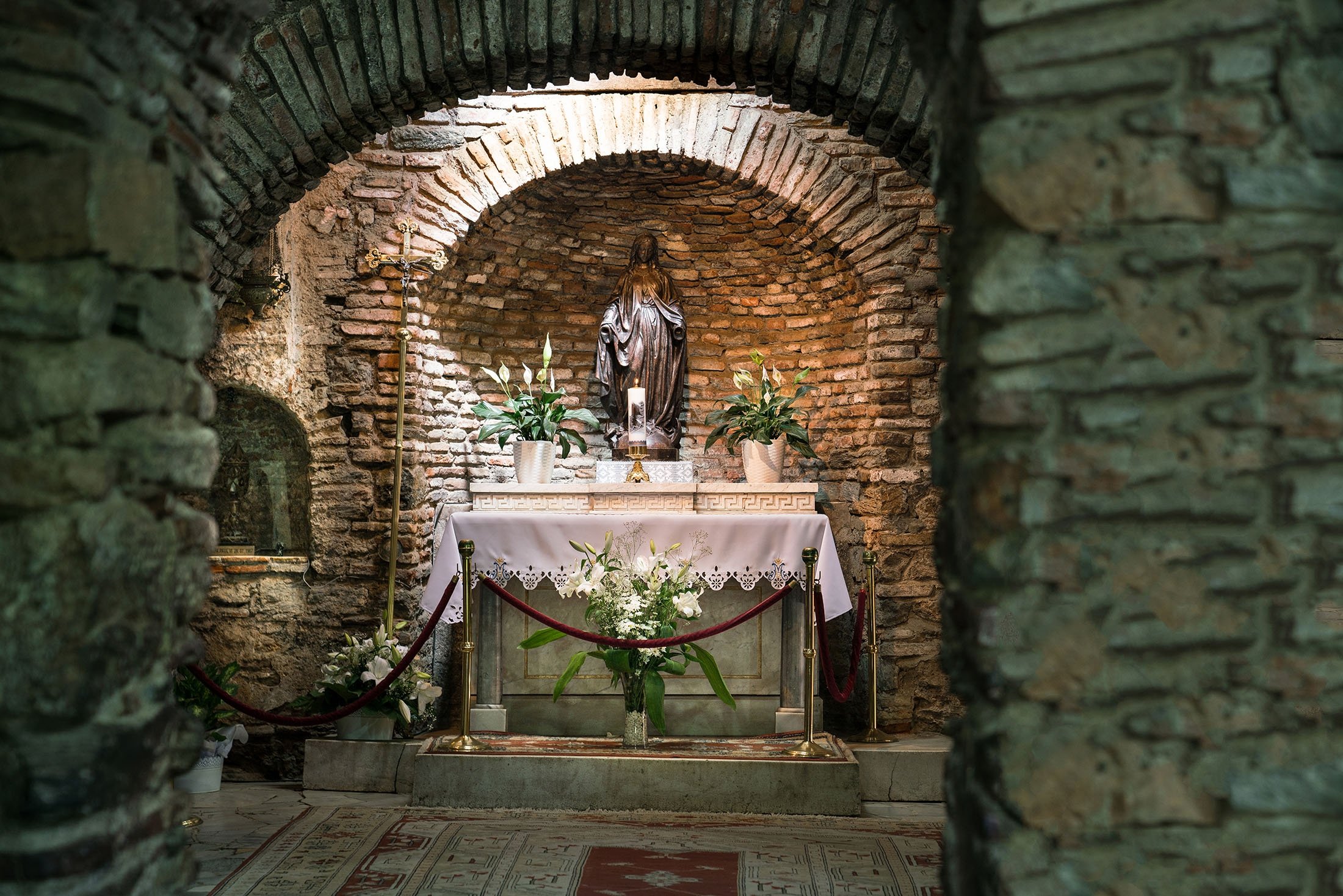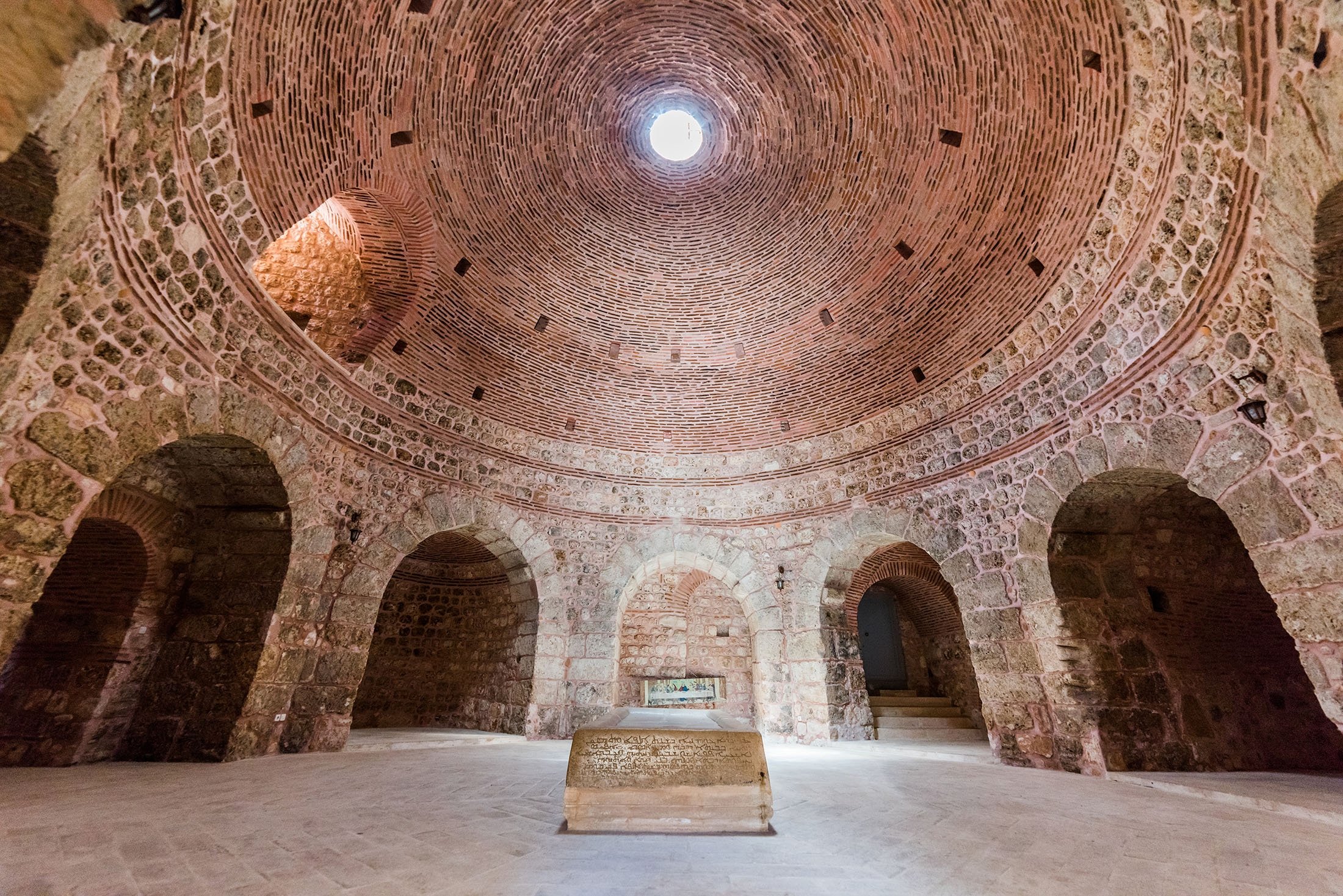© Turkuvaz Haberleşme ve Yayıncılık 2025
When religious firsts are mentioned, especially when it comes to Christianity, Turkey isn't exactly the very first place most people would think of. But the country is actually home to the world's first cathedral, named after the first pope, St. Peter (Pierre) in Antioch (Antakya). The historic church is revered as the first place where the disciples of Jesus were called "Christians." But there are many other sacred and biblical Christian sites scattered across Turkey – from sunny Antalya in the south to Trabzon in the north and Mardin in the southeast.
Here are six sites of noteworthy importance:

The Church of St. Nicholas, also known as the St. Nicholas Monumental Museum, is a Byzantine church devoted to St. Nicholas. With the bestowal of the emperor Justinian I, the church was built in A.D. 520 on the base of the religious complex where St. Nicholas served as the archbishop.
The restoration of the church was carried out in 1892 by Russian Emperor Nicholas I. The church was used well into 1923 by the Ottoman Greeks in Demre until they were obligated to leave for Greece following the Population Exchange Agreement, signed by the Greek and Turkish states. The Church of St. Nicholas was world-renowned in previous centuries, with its stunningly artistic frescoes and unique architectural features.
The sarcophagus inside the church is presumed to have belonged to St. Nicholas. It is believed that the bones of St. Nicholas were in this sarcophagus before they were seized and taken to Italy by a group of Italian sailors in the 11th century. Today the remains of St. Nicholas (apart from the few bones displayed in Antalya Museum) are buried in Basilica di San Nicola in the Italian city of Bari.
Every day, thousands of tourists flock to the church, which was included in UNESCO’s Tentative Heritage list in 2000.

The House of the Virgin Mary, which now serves as a Catholic shrine, is located on Bülbül Mountain, on the foothill of which Ephesus was founded. It is assumed that St. John the Evangelist brought the Virgin Mary to Ephesus after the death of Jesus, based on St. Johns’ writings in the Gospel. From the entrance of Ephesus, the House of the Virgin Mary is located at a 10-minute up-hill drive.
It is protected by the Municipality of Selçuk, not by the Ministry of Culture and Tourism, therefore, the Museum Card is not valid here. The entrance fee is TL 10 ($1.23) for Turkish citizens and TL 25 for foreigners.
The story of how this house was discovered up in the tree-covered mountain is interesting. It is claimed that before Ephesus was fully discovered and excavated, a bedridden German nun named Anne Catherine Emmerich had visions about the whereabouts of the House of the Virgin Mary. A French priest, who recorded the account of Emmerich’s visions, visited Ephesus in 1881 and supposedly found the House of the Virgin Mary standing at the precise location Emmerich had described.
Today, apart from tourists, it is a site for pilgrimage for many staunch Christians. Since the visit of Pope Paul VI in 1967, rituals and ceremonies are carried out at the House of the Virgin Mary each year on Aug. 15.
Cappadocia is a vast region in central Anatolia that chiefly comprises the provinces of Nevşehir, Niğde, Aksaray and Kayseri. Undoubtedly, many have heard of the area, famous for its fairy chimneys, underground cities, rock-hewn churches and cave hotels. Cappadocia stands as one of the highlights of Turkey’s tourism sector.
Since the pandemic’s long-lasting effects still linger on the tourism industry, you can turn this crisis into an opportunity and head over to the Cappadocia, far from the crowds which usually flock to the area by tens of thousands each day.
Cappadocia’s landscape is ineffably beautiful. But what is the historical importance of it? Why did the inhabitants of the region carve their abodes and religious complexes under the ground but not above it?
The answer is simple. Cappadocia was settled by the early Christians around the third century, who were fleeing the violent prosecution of the Romans. These people who objected to inhumane punishments had to devise ways to live covertly so they came up with ingenious methods to build their settlements.
The volcanic tuff and limestone are the dominant elements in Cappadocia’s landscape. These stones can be carved and shaped easily with iron tools. The nature of the soil of the area played an important role in the early Christian settlement in Cappadocia.
The vastness of the area is such that you would probably need a couple of weeks to fully cover the attractions in Cappadocia. Given the lack of technology and the paucity of able-bodied manpower, the architectural methods used by early Christians to build structures of various natures continue to marvel visitors. Today in 2021, most of the churches, underground settlements and monasteries are still intact.
Indisputably, the towns of Ürgüp and Göreme dominate the overall tourism in Cappadocia. Once you are in either of these towns, the signboards and the explanatory information boards in English, which are pretty much everywhere, will be enough to assist you during your visit. However, outside these towns as well, there are many other spots where you can observe the early Christian lifestyle, visit the religious sites and tour countless underground cities.
Here are some of them:
- The underground city of Derinkuyu
- The underground city of Kaymaklı
- Üçhisar
- Avanos

The Mor Gabriel Syriac Orthodox Monastery (also known as the Deyrulumur Monastery), takes us to the historic town of Midyat in the southeastern Turkish province of Mardin. Built in 397, it is known to be the oldest still-standing Syriac monastery in the world. The monastery is located on the Tur Abdin plateau, which is also known to have been the religious and cultural homeland for the Syriac Christians. The plateau’s landmass is shared by the provinces of Mardin and Şırnak.
Legend has it that in 397, the monk Mor Samuel and his acolyte Mor Simon founded the Mor Gabriel Monastery. According to the religious account, Simon dreamt that an angel ordered him to build a place for worship at the spot marked with three stone slabs. Subsequently, he took his teacher Simon to the exact location and found the stones from his dream. They set the foundations of the monastery at this very spot.
Between the seventh and 20th centuries, the monastery was the most important religious complex on the plateau. In the sixth century, Mor Gabriel grew into a very large complex that accommodated more than 1,000 monks. The fame of it reached all the way to Rome after which a few Roman emperors made generous donations to the monastery.
Akdamar (or Akhtamar) Church is one of the most astounding historical sites in Turkey. Located on the Akdamar Island in Turkey’s largest lake, Lake Van, Akdamar Church is one of the finest examples of the Armenian Orthodox religious complexes in Turkey.
The origin of the name of the island is unknown. An old legend says that an Armenian princess named Tamara had fallen in love with a peasant boy. The boy used to swim to the island every day after sunset, and Tamara would guide him by holding a lantern to show her lover the direction. One day, her father learned about the boy and broke the lantern. The boy was unable to find his way in the dark, which caused him to drown in the middle of the lake. Apparently, he died wailing: “Oh, Tamara! Oh, Tamara!" The church and the island are named after his last words.
Akdamar Church was built between 915-921 by the architect Manuel, following the order of the Armenian King Gagik I Ardzruni, who was the ruler of the Kingdom of Vaspurakan.
In 2007, the church opened as a monumental museum after the comprehensive construction work carried out by the state which cost about $1.4 million. Since 2010, a mass is held annually by the Armenian congregation in Akdamar Church.
The Sümela Monastery (Panagia Sumela in Greek) is a 1,600-year-old Orthodox mountaintop monastery built on the side of Karadağ Mountain, which is located in the Altındağ Valley of Trabzon’s Maçka district. Currently included in UNESCO’s Tentative List of World Heritage Sites in Turkey, this religious complex is presumed to have been built in the A.D. fourth century during the reign of the Byzantine Emperor Theodosius I by two priests named Barnabas and Sophronios who were natives to Athens, Greece.
Today, the monastery is perhaps the most popular tourist attraction in Turkey’s Black Sea region. And with its amazingly well-preserved artistic frescoes and stunning architectural features and location, this magical site is deserving of its admiration.
The monastery is spread over a large area and consists of church buildings, chapels, rooms where once the monks lived, bathrooms, libraries that once hosted valuable ancient manuscripts, food cellars, a kitchen and a section that was a natural spring with healing properties.
